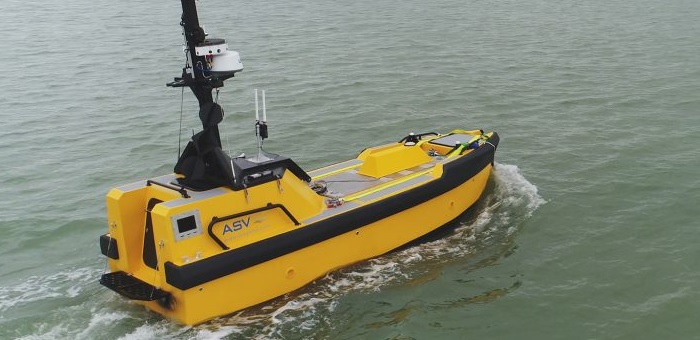A new joint industry project in UK is set to explore the technical, regulatory and societal issues of using autonomous surface vessels, integrated with existing manned shipping operations, to support offshore wind farm operations and maintenance. The ultimate goal of the 18-month Windfarm Autonomous Ship Project (WASP) is to develop a timeline for the phased introduction of autonomous vessels.
Previous research has found that vessels can account for as much as 60% of an offshore wind farm’s operating costs, which in themselves make up almost 25% of the total lifecycle costs. These costs could be significantly reduced through the introduction of Robotics and Artificial Intelligence (RAI).
The project, partly funded by Innovate UK and led by UK-based autonomous systems provider ASV Global, in partnership with the Offshore Renewable Energy (ORE) Catapult, SeaRoc Group, Houlder and University of Portsmouth, will set out to verify the benefits and build the case for the use of autonomous vessels.
- ASV Global will further advance its autonomous control system to tackle the challenges presented by the operation of autonomous vessels in the constrained environment of a wind farm
- ORE Catapult will work on the use cases and validation of the cost savings created by the project
- SeaRoc Group will extend its SeaPlanner software to assist with the monitoring and operation of autonomous vehicles and the introduction of advanced cargo planning systems
- The University of Portsmouth will assist with efficient route planning, logistics management and system analytics
- Houlder will develop the vessel design and an innovative handling system to enable autonomous cargo transfer
- Industry sponsor Ørsted will provide use cases from its Hornsea One offshore wind farm, located 120km off the Yorkshire coast.
Manned operations will be used as the baseline to compare the time, cost and performance of unmanned ships in different roles, including asset surveillance, security patrols, component spares supply and crew transfer operations.
In addition, new products are expected to come from adaptation of marine coordinator systems to operate with both manned and unmanned vessels, optimised navigation systems from autonomous vessels and robotic systems to support offshore operations. Simon Cheeseman, Strategy Manager at ORE Catapult, noted:
Automotive, aerospace, and defence are all embracing autonomous systems to carry out some of what we term the ‘5Ds’ – jobs which are dull, dangerous, dirty, distributed and dear (expensive)…Our industry is always looking for ways to reduce the need to send people offshore in a hazardous environment, at the same time as driving down costs whilst continually improving performance. WASP will assess the issues involved in integrating unmanned vessels operations and start to build the evidence to validate our initial findings.
ASV Global is also currently leading a £1.2 million research project in partnership with compatriot BMT to enhance safety and reliability of autonomous navigation, through the use of deep learning machine vision systems trained with simulated and real-world data.
Earlier in 2018, UK Transport Secretary, Chris Grayling, outlined his vision for the UK to be at the forefront of a maritime technology revolution, noting that UK’s maritime industry is on the verge of a technological revolution that could make shipping faster, safer and more environmentally friendly. The UK Department of Transport has also informed that innovative technology, such as autonomous ships and digital ports, will be on the agenda with the appointment of a group of experts to help advise on the future of maritime.
Furthermore, this week, the UK Royal Navy received an autonomous minesweeper system that can safely clear sea lanes of mines. After successful trials, the demonstrator system could go on to be used by the Royal Navy in the future to defeat the threat of modern digital mines.




























































